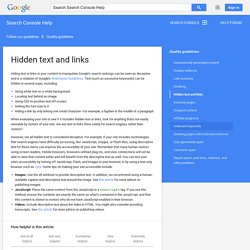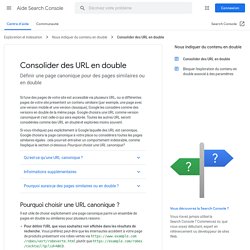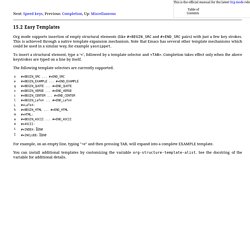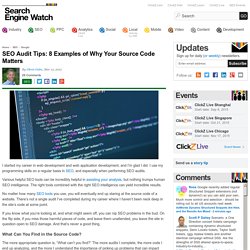

Implementing an effective Web Crawler. Introduction Web crawler (also known as a Web spider or Web robot) is a program or automated script which browses the World Wide Web in a methodical and automated manner. This process is called Web crawling or spidering. Many legitimate sites, in particular search engines, use spidering as a means of providing up-to-date data.
Web crawlers are mainly used to create a copy of all the visited pages for later processing by a search engine, which will index the downloaded pages to provide fast searches. Crawlers can also be used for automating maintenance tasks on a Web site, such as checking links or validating HTML codes. A Web crawler is one type of bot, or software agent. Hidden text and links - Search Console Help. Hiding text or links in your content to manipulate Google’s search rankings can be seen as deceptive and is a violation of Google’s Webmaster Guidelines.

Text (such as excessive keywords) can be hidden in several ways, including: Using white text on a white backgroundLocating text behind an imageUsing CSS to position text off-screenSetting the font size to 0Hiding a link by only linking one small character—for example, a hyphen in the middle of a paragraph When evaluating your site to see if it includes hidden text or links, look for anything that's not easily viewable by visitors of your site. Are any text or links there solely for search engines rather than visitors? However, not all hidden text is considered deceptive. Images: Use the alt attribute to provide descriptive text. Use canonical URLs - Search Console Help. Lorsque Googlebot indexe un site, il essaie de déterminer le contenu principal de chaque page.

S'il trouve plusieurs pages d'un même site qui sont semblables, il choisit la page qui lui paraît la plus complète et utile, et la définit comme page canonique. La page canonique est explorée plus régulièrement. Les pages en double sont analysées moins souvent afin de réduire la charge d'exploration de Google sur votre site. Google choisit la page canonique en fonction d'un certain nombre de facteurs (ou indicateurs), à savoir : si la page est diffusée via le protocole HTTP ou HTTPS ; la qualité de la page ; la présence de l'URL dans un sitemap ; et tout attribut "rel=canonical". Vous pouvez utiliser ces techniques pour indiquer votre préférence à Google, mais Google peut choisir une autre page canonique pour diverses raisons. Les différentes versions linguistiques d'une même page ne sont considérées comme des doublons que si le contenu principal est dans la même langue. Easy Templates - The Org Manual.
This is the official manual for the latest Org-mode release. 15.2 Easy Templates Org mode supports insertion of empty structural elements (like #+BEGIN_SRC and #+END_SRC pairs) with just a few key strokes.

This is achieved through a native template expansion mechanism. Note that Emacs has several other template mechanisms which could be used in a similar way, for example yasnippet. To insert a structural element, type a ‘<’, followed by a template selector and <TAB>. The following template selectors are currently supported. For example, on an empty line, typing "<e" and then pressing TAB, will expand into a complete EXAMPLE template. You can install additional templates by customizing the variable org-structure-template-alist. SEO Audit Tips: 8 Examples of Why Your Source Code Matters. I started my career in web development and web application development, and I’m glad I did.

I use my programming skills on a regular basis in SEO, and especially when performing SEO audits. Various helpful SEO tools can be incredibly helpful in assisting your analysis, but nothing trumps human SEO intelligence. The right tools combined with the right SEO intelligence can yield incredible results. No matter how many SEO tools you use, you will eventually end up staring at the source code of a website. There’s not a single audit I’ve completed during my career where I haven’t been neck deep in the site’s code at some point. If you know what you’re looking at, and what might seem off, you can nip SEO problems in the bud. What Can You Find in the Source Code? The more appropriate question is, “What can’t you find?”
Whenever I present an audit, I always explain the importance of having a clean and crawlable website. 8 Examples of What You Can Find 1. 2. 3. 4.